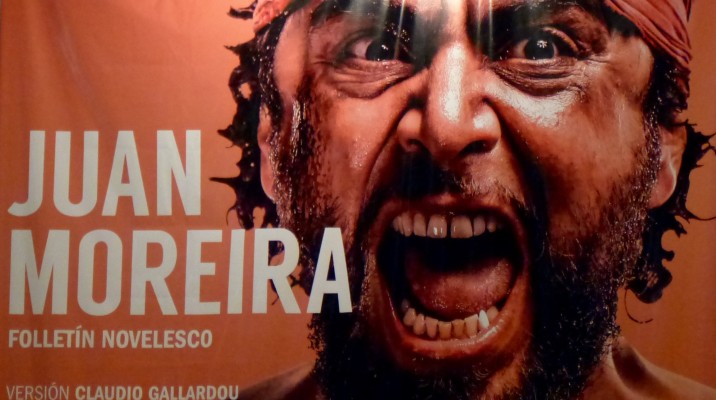
The early play Juan Moreira (1886) was one of the major oevres of teatro gauchesco in 1891. At the Podestá Brothers’ circus it was played in a novel way – without pantomime and with text.
Juan Moreira portrays the mistreated and persecuted gaucho – or criollo, typically the son of native mother and conquistador. Gauchos were persecuted and despised. Juan Moreira is the gaucho enraged at injustices and crimes committed against him.
Note about the Podestá circus, Gauchesco Theatre, National Theatre and Sainete Criollo
The circus was the crib of our National Theatre thanks to the vision of the Podestá brothers. They promoted National Thetre by engaging the excellent talent of local writers. Their plays were offered to the public at the circus. Another theatre form, the “sainete criollo,” short play, mix of comedy and drama, depicted the world of immigrants. The style was the favorite of criollos and immigrants. In the early 1900s Armando Discépolo, brother of our beloved tango poet Enrique Santos Discépolo, premiered his plays, known as Teatro Grotesco – at the Podestá circus. The climates of the Grotesco wwere depresive and its protagonists miserable immigrants suffocated in grim realities. Jose Gonzalez Castillo (author of tango Grisetta), Armando Discépolo. Ivo Pelay, Manuel Romero, Pascual Contursi, Cátulo Castillo, and Enrique Santos Discepolo were among the many artists who moved freely between theatre and tango spaces.
Current note
Juan Moreira is now playing at Teatro Cervantes, one of my favorite playhouses in the city.
Those interested in the sociological origins of tango will have an opportunity to watch this play and understand the predicament of gauchos. Their sense of individuality, anarchy and love of freedom found their way into our tango-dance.
Teatro Cervantes: www.teatrocervantes.gob.ar

